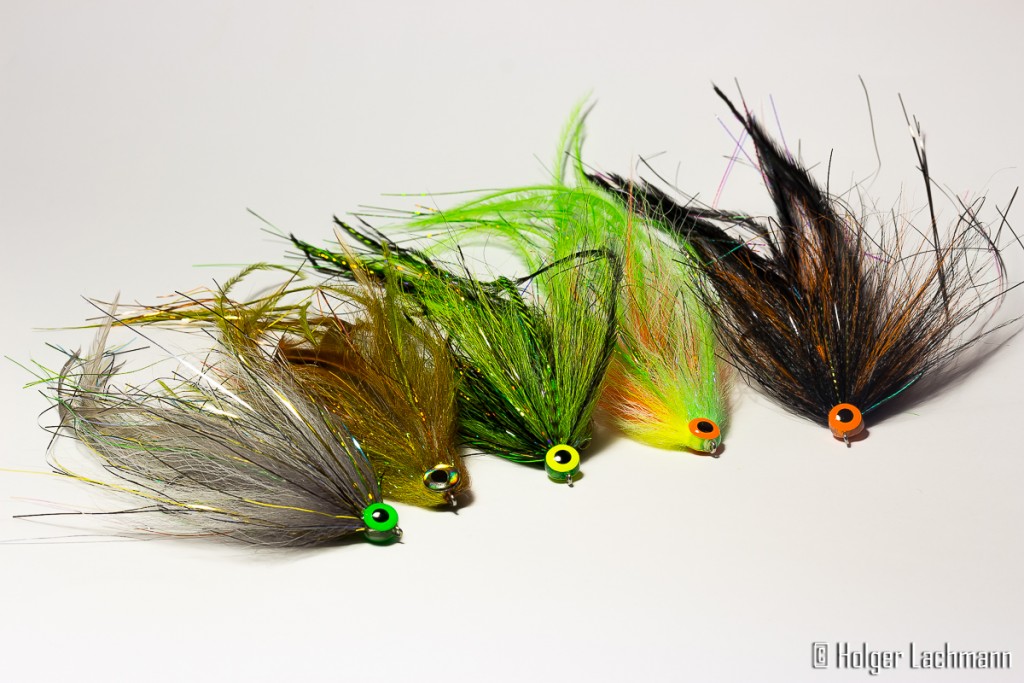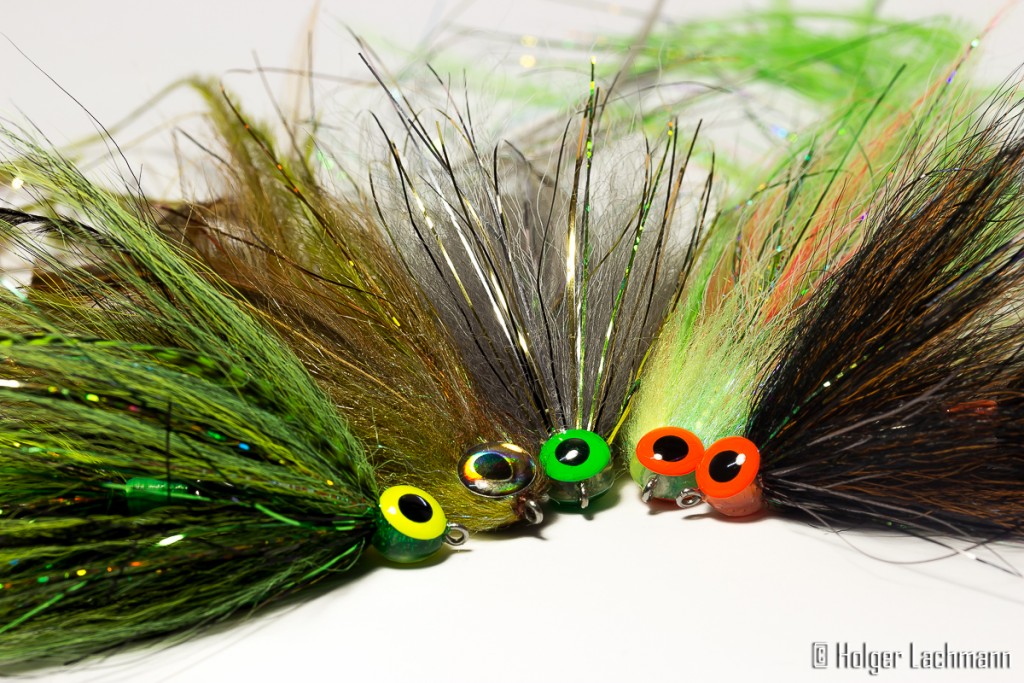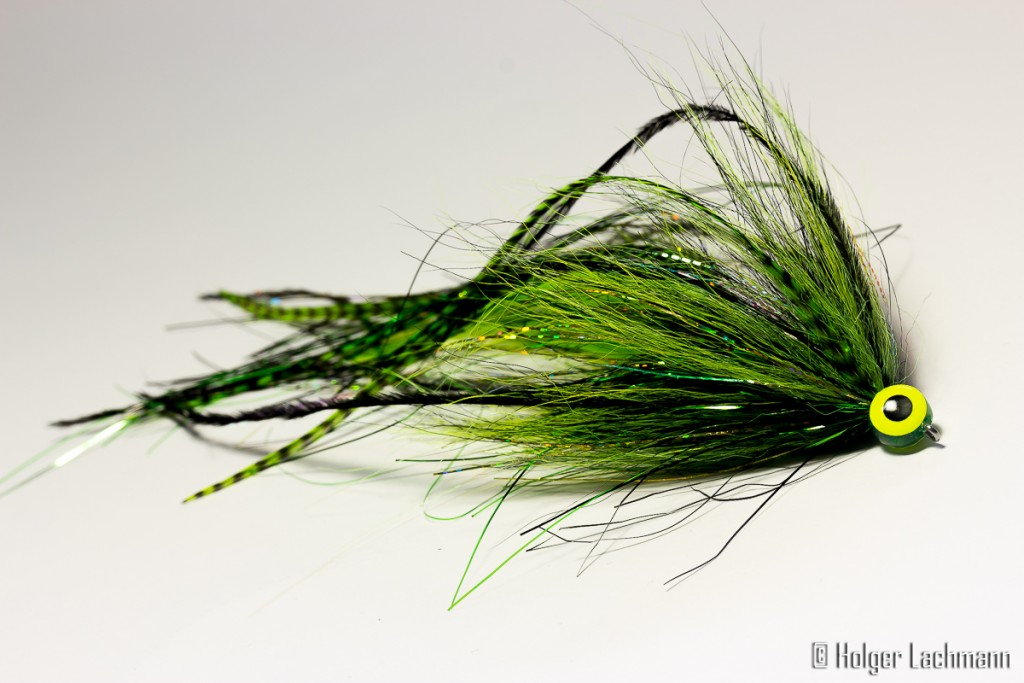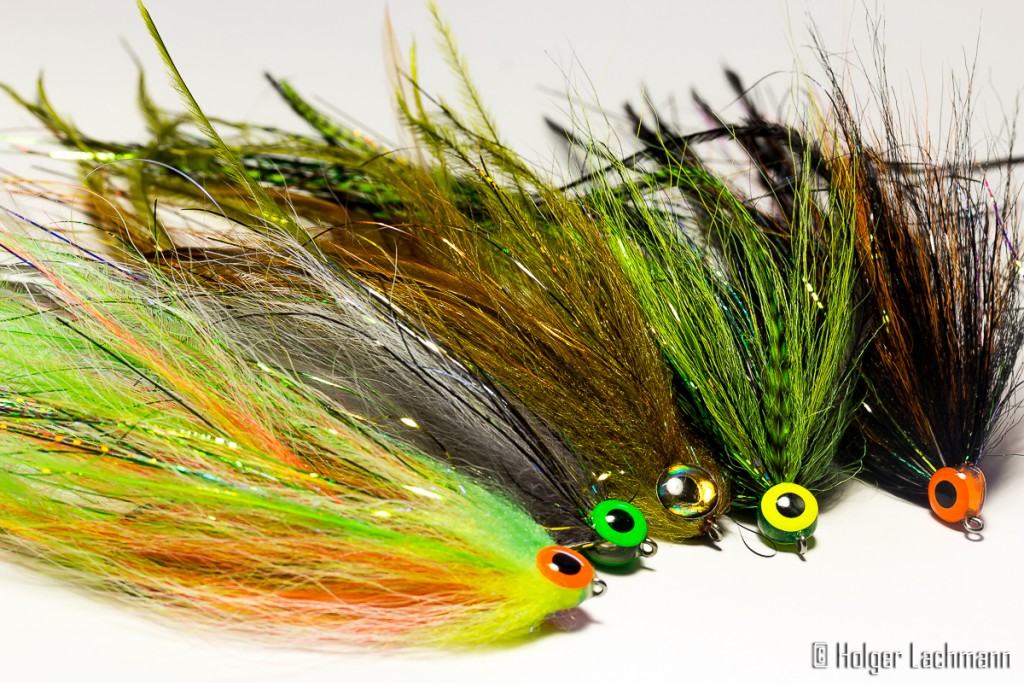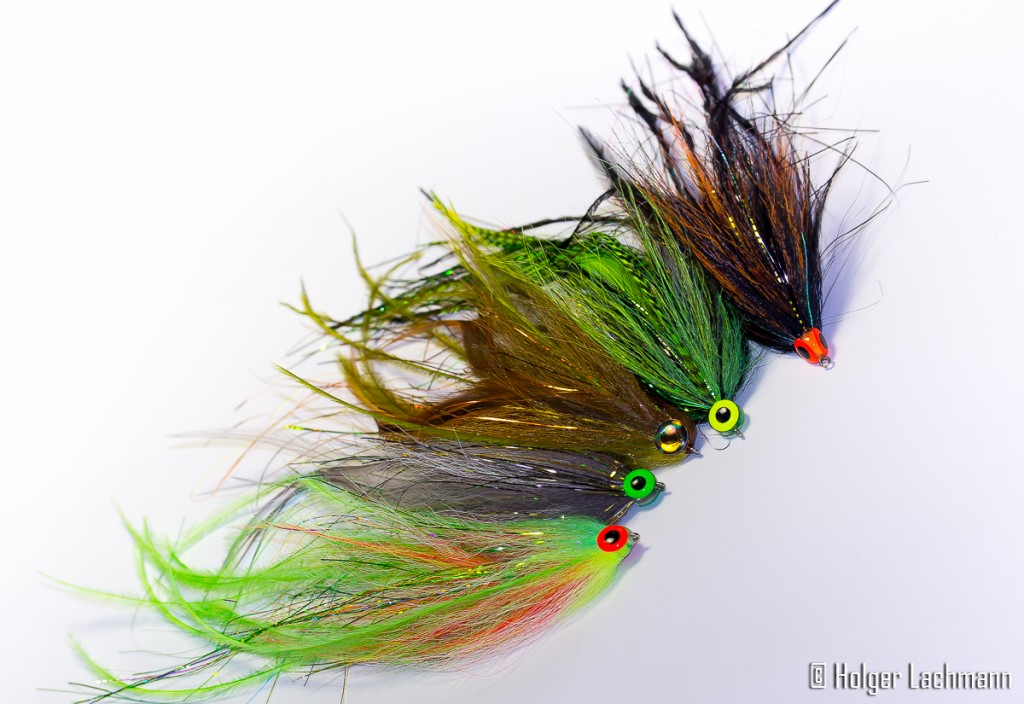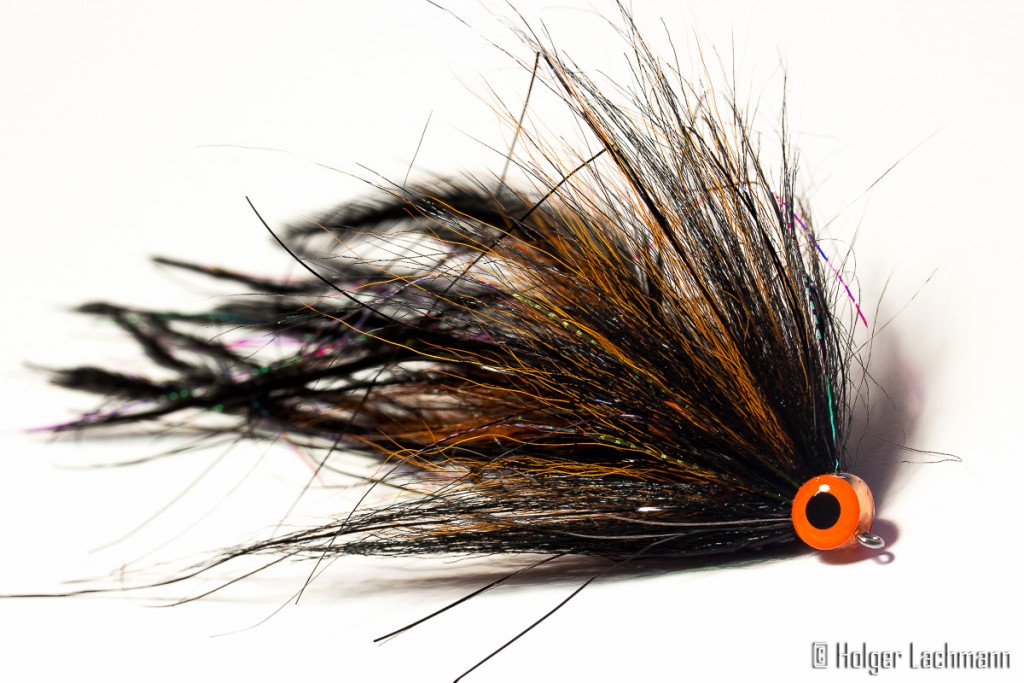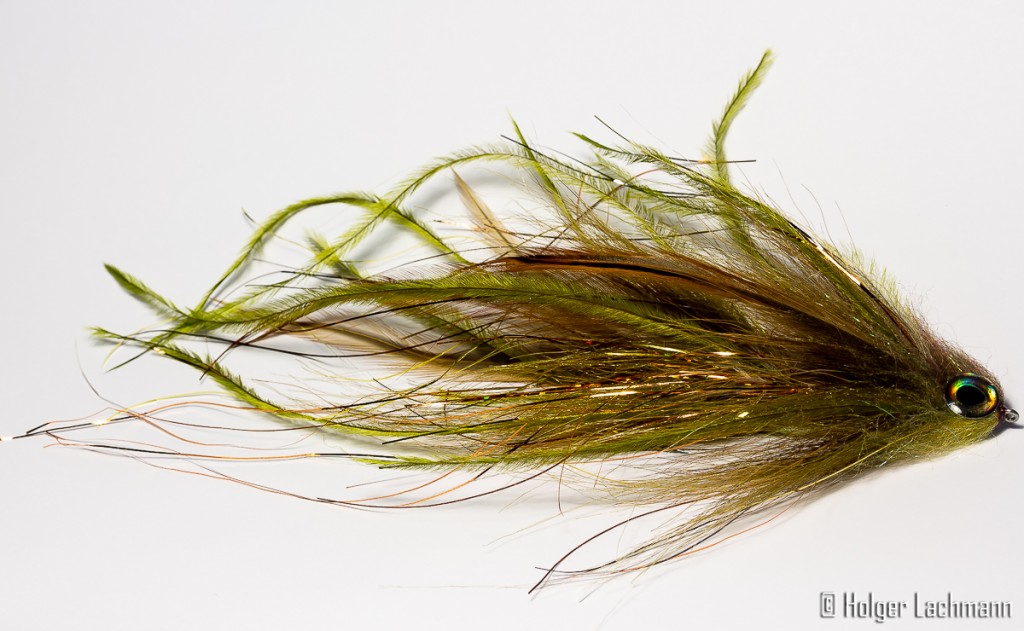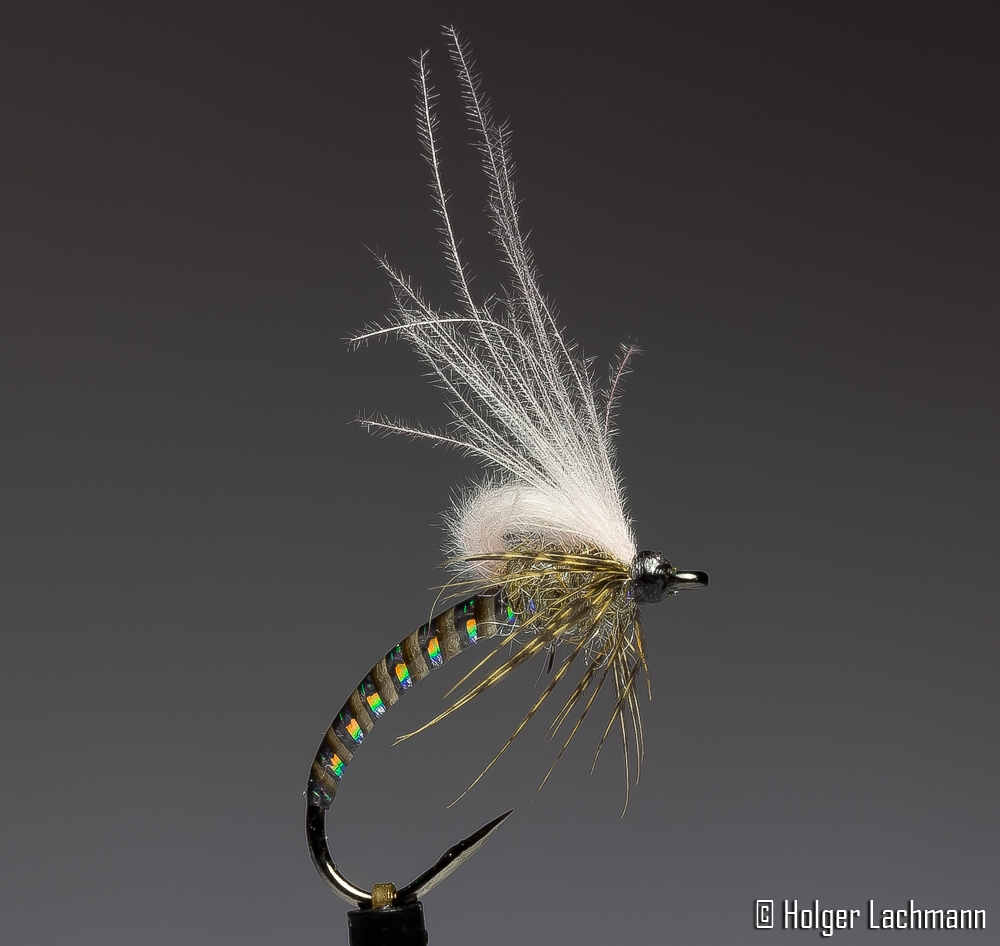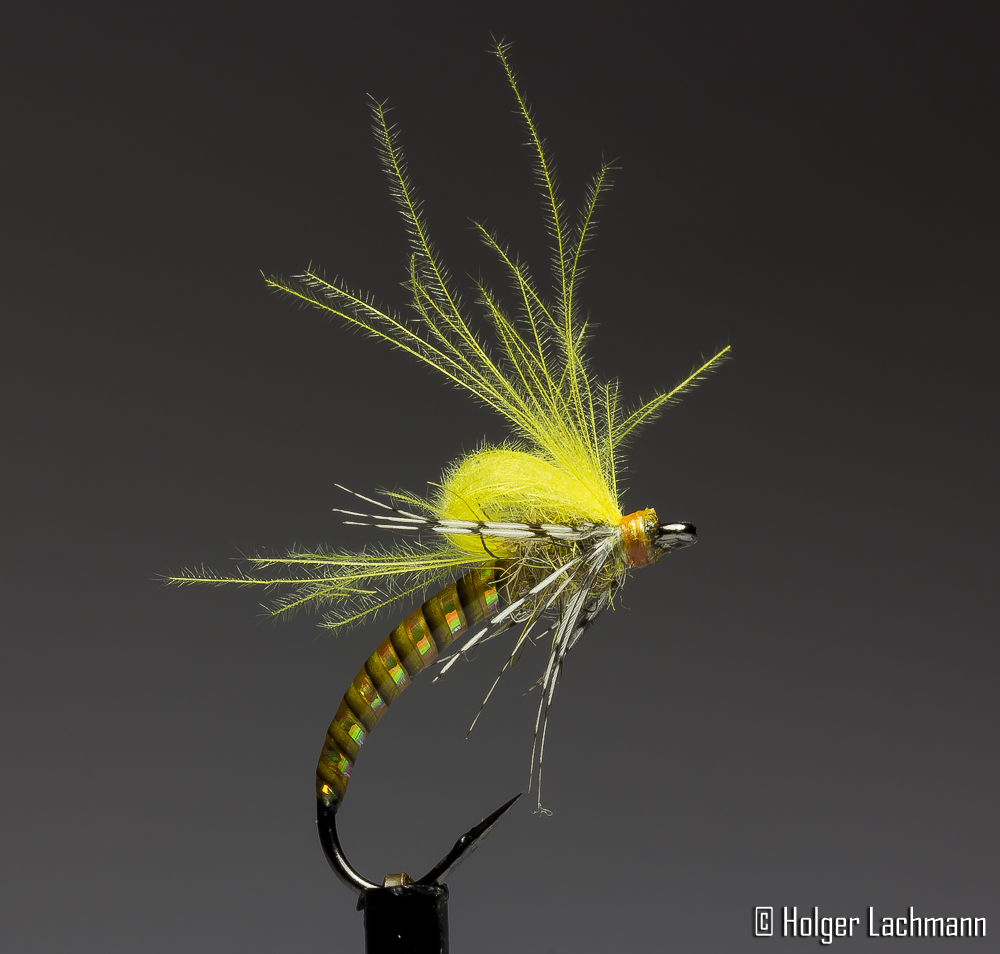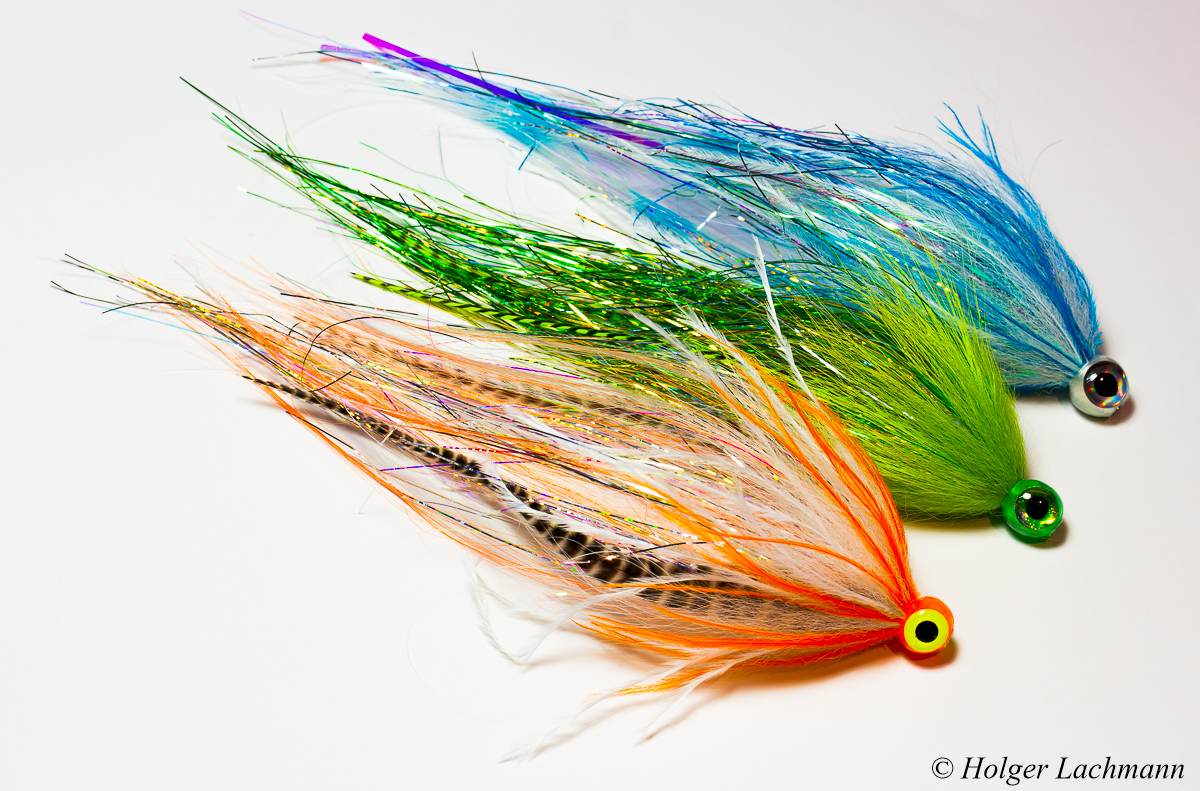These streamers for pike are articulated, so the move very nice. The length is between 17-20 cm. Even if the look quite bulky, they are easy to cast, because the materials are tied in sparsely . Really flies that everyone can cast.
Schlagwort-Archive: Flashabou
Swamp Thing
Fancy Emerger Bodies
Loop Wing Emerger #14
I tied this emerger on a D1160 Daiichi Klinkhammer hook and gave it a nice fancy look for the abdomen. Great fly for grayling on cloudy days with not to much light. 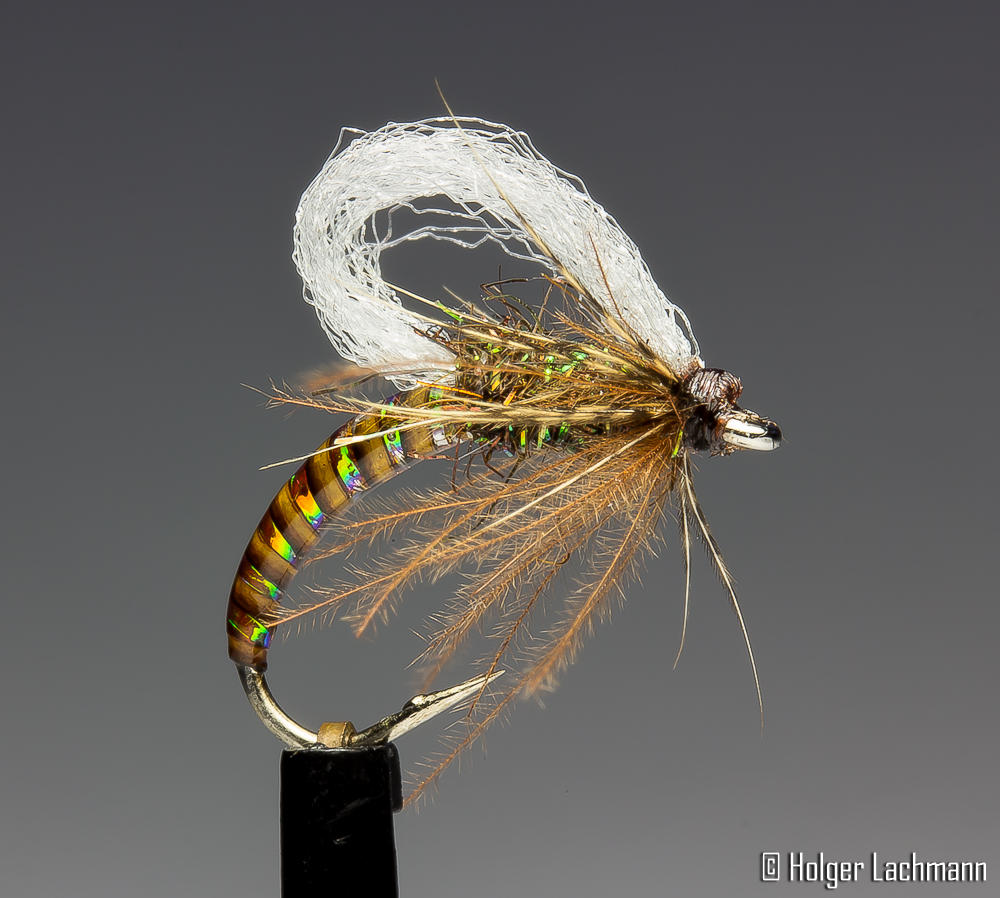
Easy Cast Pike Fly
Flatwing Tobis
I tied two of this flies 3 times. Tied it, cut it up, tied it, cut it up again, tied it a third time. I was just not satisfied with the result and I don’t put a „bad“ fly in my box, because I know that I won’t fish it and I won’t give it away as a present. I just throw it in the trash after some years. Maybe the fish doesn’t give a damn, but if you don’t have faith in your fly, you won’t fish it the right way.
Fly Tier’s Little Helper – Part 2 – Hackle Pliers
There are a lot of tools for the fly tier on the market. Some are good, some are useless, some are expensive but worth the money, some are cheap and still super usefull.
I used a lot of different tools and gimmicks in the last 20 years, and in this series I want to show things, which worked well for me and I’ll try to tell you why.
Part 2
Every fly tier needs a good hackle plier. You can find a lot of different pliers on the market. This are the two types I can highly recommend.
1. Dorin Hackle Plier
You can buy it normally for less than 5,- €. It works great and has a lot of power holding different materials. I use it often, when I have to tie with a high strength, especially ribbing with mono. Just wind the mono two times around the wire. The only negative point for me is, that my finger does not fit into the loop of wire.
This is the Dorin hackle pliers I use. It looks a bit shabby, but it’s over 13 years old.
From time to time the plastic tubing is damaged and the materials begin to slip. To solve the problem is very easy.
Just push the tube over the edge and cut it. Now it works like brand new. You can see, that it’s not necessary to do it often. Like I said, the one on the picture is more then 13 years old and it was used very often. There is still some tubing left. ;-)
Here is the expensive one. C&F hackle plier. About 30,- € for the cheapest model. Well, a lot of money, but it’s worth every cent. It works perfect as an all around hackle plier. You can tie with it many years and it still works like on day one. The rubber pads are missing on mine, but that’s no problem. Still working great.
The secret of success. The tip is rough in a microscopic way. Hackles, feathers and synthetics are hold very well.
This is the rotary version of the C&F, which I sometimes like to use when tying smaller patterns.
Well, that’s it! My two cent on hackle pliers. These are the pliers I use since many, many years without any problems. Still working perfect.
Fly Tier’s Little Helper – Part 1 – Bug Bond Pro Light Mains Adapter
There are a lot of tools for the fly tier on the market. Some are good, some are useless, some are expensive but worth the money, some are cheap and still super usefull.
I used a lot of different tools and gimmicks in the last 20 years, and in this series I want to show things, which worked well for me and I’ll try to tell you why.
I begin with something very special, the Bug Bond Pro Light Mains Adapter.
When you look at my flies, you’ll see that I work a lot with uv resin. No matter if I tie dries and nymphs or streamer and flies for pike, seatrout, asp, …
Working with uv resin means, you have to use a uv torch with maximun battery power to harden the resin. I often saw people using a torch with low power, wondering, why the resin won’t cure like it should.
Bug Bond offers a nice solution for the power problem: An adapter for your pro torch to connect it with your power supply at home. You just have to screw the adapter into the torch and you have a super strong uv torch every time.
To connect the adapter with the torch, you have to screw off the switch at the end.
Maybe you’re asking yourself how to switch on the torch without the switch at the end? With the Kit comes a solid foot switch like you know them from sewing machines. Just put your foot on the pedal and the torch will do it’s job.
The torch is always hanging from on of my lamps on my tying desk ready for some action.
I f you like to use uv resin for your tying, then I can recommend you the Mains Adapter. It’s super nice to use, you got always maximum curing power and you don’t have to care about the batteries.
I use the Adapter now several months and I don’t want to miss it.
a little rainbow
Brazilian Baitfish
Tube Fly Tying
Sedge Pupa Step By Step Tutorial
I posted this pattern some weeks ago on my blog and on Facebook and I was asked, if I could do a step by step tutorial about it. So, here it is. I hope you like it as much as I do.
Materials:
- Hook: Maruto C47 BL # 12
- Weight: Tungsten Bead Black Nickel
- Thread: Dyneema
- Body: Thread-Underbody, olive marker pen, Flashabou, Polish Quills green
- Resin: Bug Bond Lite
- Dubbing: SLF light olive and cinnamon
- Wings: Flashabou Mirage colored with a brown marker pen
- Wing Case: Pheasant
- Legs: Partridge
Put the hook with the tungsten bead in the vise.
Form the unterbody with your thread and tie in the Flashabou and Polish Quill.
Color the underbody with an olive marker pen and wind the Flashabou and then the Polish Quill around the body and secure it with your tying thread.
Put some Bug Bond Lite on the body and cure the resin with your Bug Bond torch. Then, tie in some strands from a pheasant tail feather as shown.
Dub some SLF light olive on the fly and tie in the brown colored Flashabou Mirage. Cut the Mirage like shown on the photo.
Dub the rest with SLF in cinnamon till you reach the tungsten bead.
Cut a „V“ out of a partridge feather and tie in the fibres of the partridge as legs. Then fold the pheasant strands to the front to create the wing case and catch it with your tying thread. Put a drop of Bug Bond Lite on the wing case incl. the thread with which you catch the pheasant. Cure the Bug Bond Lite with your Bug Bond torch and cut the thread. You’re done! The Bug Bond Lite makes it super strong! You don’t need to do whip finish!
That’s it! Now grab your fly rod and catch some nice trout or grayling or whatever you like to catch with nymphs and pupas!
tight lines!
Holger

